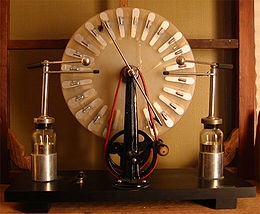
The Wimshurst Machine
The Wimshurst machine is an electrostatic device for generating high voltages developed between 1880 and 1883 by British inventor James Wimshurst
(1832 � 1903). It has a distinctive appearance with two large contra-rotating discs mounted in a vertical plane, two cross bars with metallic
brushes, and a spark gap formed by two metal spheres.
by Tony van Roon
These machines belong to a class of generators called influence machines, which separate electric charges through electrostatic induction, or
influence. Earlier machines in this class were developed by Wilhelm Holtz (1865 and 1867), August Toepler (1865), and J. Robert Voss (1880). The
older machines were less efficient and exhibited an unpredictable tendency to switch their polarity. The Wimshurst did not have this defect.
In a Wimshurst machine, the two insulated disks and their metal sectors rotate in opposite directions passing the crossed metal neutralizer bars and
their brushes. An imbalance of charges is induced, amplified, and collected by two pairs of metal combs with points placed near the surfaces of each
disk. These collectors are mounted on insulating supports and connected to the output terminals. The positive feedback increases the accumulating
charges exponentially until the dielectric breakdown voltage of the air is reached and a spark jumps across the gap.
The machine is theoretically not self-starting, meaning that if none of the secors on the disks has any electrical charge there is nothing to induce
charges on other sectors. In practice, even a small residual charge on any sector is enough to start the process going once the discs start to
rotate. The machine will only work satisfactorily in a dry atmosphere. It does require mechanical power to turn the disks against the electric field,
and it is this energy that the machine converts into electric power. The output of the Wimshurst machine is essentially a constant current that is
proportional to the area covered by the metal sectors and to the rotation speed. The insulation and the size of the machine determine the maximum
output voltage that can be reached. The accumulated spark energy can be increased by adding a pair of Leyden jars, an early type of capacitor
suitable for high voltages, with the jars� inner plates independently connected to each of the output terminals and the jars� outer plates
interconnected. A typical Wimshurst machine can produce sparks that are about a third of the disk's diameter in length and several tens of
microAmps.
Look at a YouTube videos here: [Wimshurst Machine Video].
The two contra rotating insulating discs (usually made of glass) have a number of metal sectors stuck onto them. The machine is provided with 4 small
earthed brushes (2 on each side of the machine on shafts at 90 degrees to each other, plus a pair of charge collection combs.
Assume that a single sector on one glass plate has a positive electrostatic charge. As the sector passes a sector on the other plate, the positively
charged sector attracts the electrons in the neighbouring sector to the surface next to the positive sector. This process repeats as the discs revolve
until one of sector on the other disc passes one of the earthed brushes. This brush discharges the positive charge on the opposite side of the sector
to where the electrons have migrated. As the sectors part, this second sector now retains a net negative charge. This negative charge will now repel
electrons on sectors on the other disc as they pass. Once again earthed brushes dissipate the negative charge on the outside of those sectors leaving
a net positive charge. The repeated induction of charges is cumulative and if it were not for the current drawn would continue until the insulation
broke down. The positive and negative charges are collected by combs to charge the Leyden jars. It is the mechanical energy required to separate the
opposing charges on the adjacent sectors that provides the energy source for the electrical output.
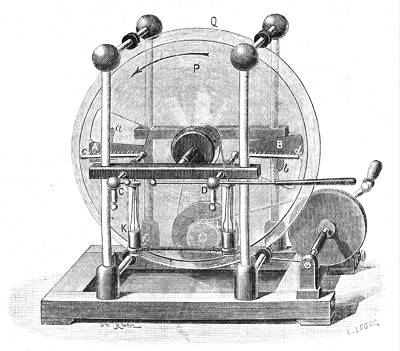
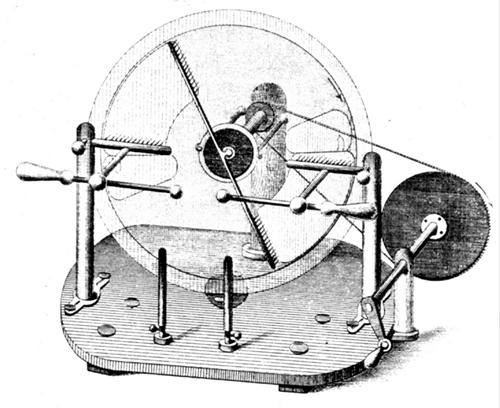
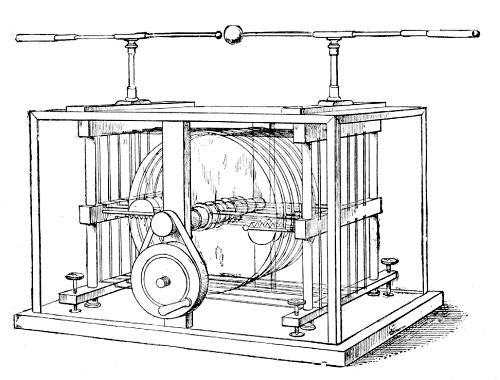
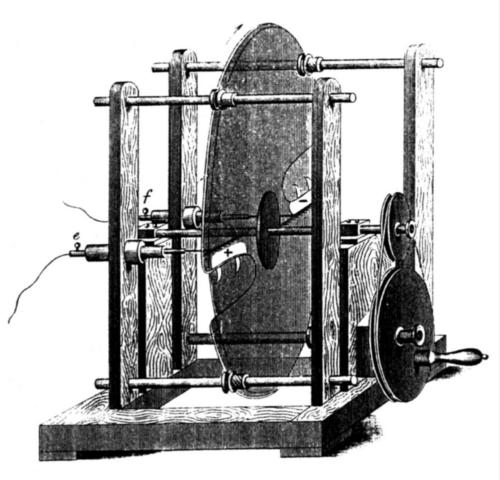
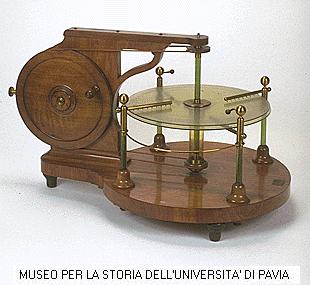
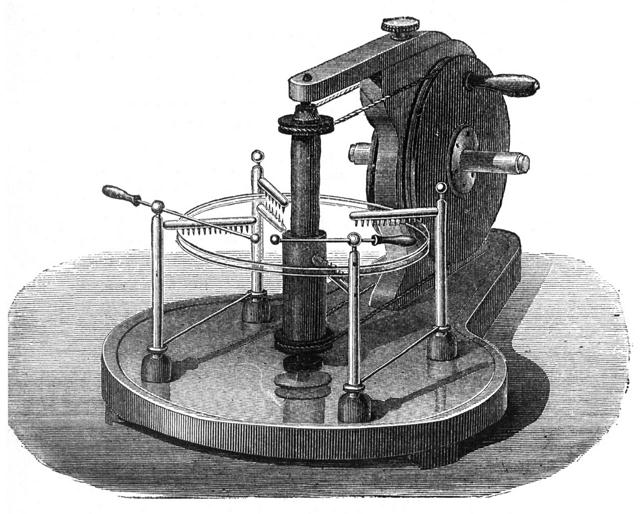
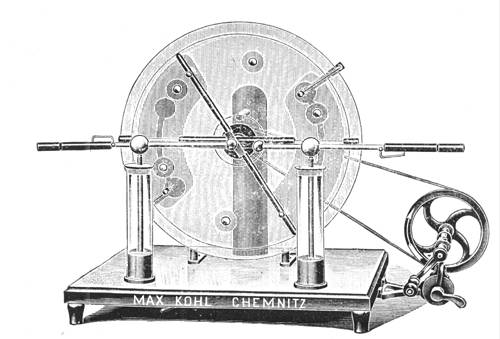

If you wish to build a Wimshurst machine, click on this link: [Wimshurst machine]
Copyright and credits:
Wikepedia photo (top) and text. Cenco Physics (www.CencoPhysics.com), YouTube video demonstration.
UNDER CONSTRUCTION
Back to High Voltage Projects Index
Copyright © 2005 - Tony van Roon
















